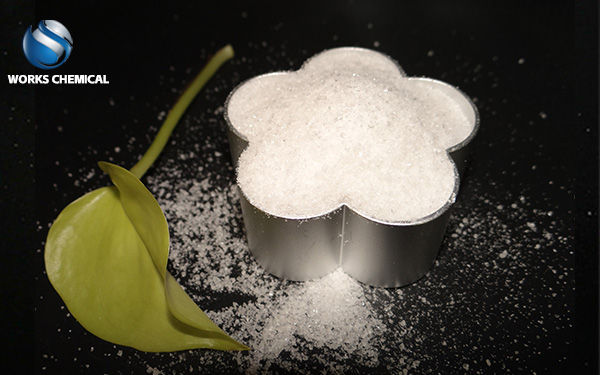
Sludge enhancers have demonstrated significant technical advantages and application value in the field of deep dewatering of plate and frame sludge. Through multi-dimensional action mechanisms, they have broken through the traditional dewatering bottlenecks and become a key technical means to achieve sludge reduction and resource utilization. The following analysis is carried out from three aspects: technical principles, application effects and practical cases:

I. Technical Principle: The Core Mechanism to break through the dehydration bottleneck
Surface modification: The cationic polymers, organosilicon hydrophobic groups and other components in the sludge enhancer can neutralize the negative charges on the surface of sludge particles, reduce the zeta potential to about +5mV, and lower the specific resistance value of sludge from 1.2×10¹² m/kg in the traditional process to 3.5×10¹¹ m/kg, significantly improving the filtration performance of sludge.
Cell wall breaking: The synergistic effect of biological enzyme preparations and surfactants increases the permeability of microbial cell walls by 60% to 80%, and the intracellular bound water release rate reaches 45% to 55%. When combined with plate and frame filter presses, it can achieve a water content of less than 55%, breaking through the traditional dehydration limit of 60%.
Skeleton construction: Liquid skeleton materials form rigid channels with a diameter of 20-50μm in the sludge, reducing the resistance to water migration by 50%-60%. Combined with 800kPa high-pressure dewatering, the treatment cycle is shortened to one-third of the traditional process.
Ii. Application Effect: Multi-dimensional value enhances dehydration efficiency
Deep dewatering capacity: The sludge enhancer combined with the plate and frame filter press can reduce the moisture content of sludge from over 90% to 40%-60%, fully achieving sludge reduction. Take municipal sludge as an example. Works Chemical sludge enhancer can reduce the volume of sludge by more than 60% and lower the disposal cost per ton of sludge by 30%-50%.
Significant efficiency improvement: The single cycle time of the plate and frame filter press has been shortened from 6-8 hours to 2-3 hours, and the equipment utilization rate has increased by 150% to 200%. The sludge feeding time has been shortened to 1.5 to 2 hours, the processing capacity has increased by 200%, and the filter cloth replacement cycle has been extended to 12 months.
Sludge cake quality optimization: The density of flocs formed by the sludge enhancer has been increased to 1.2-1.5g/cm³, the sludge feed volume of the plate and frame has been increased by 30%-50%, the thickness of the sludge cake has been increased from 15-20mm to 35-40mm, and the mechanical strength has reached 120-150N/cm², which can be directly used as raw materials for building materials.
Iii. Practical Cases: Industry Verification of Technology Implementation
Municipal sewage treatment plant: A certain plant has adopted sludge efficiency enhancers to replace the traditional "PAC+PAM" system. The sludge inlet time has been shortened from 4-5 hours to 1.5-2 hours, the moisture content of the sludge cake has dropped from 78%-82% to 52%-55%, the cost of chemicals has been reduced by 35%, and the filter cloth replacement cycle has been extended to 12 months.
Sludge treatment in industrial parks For printing and dyeing sludge (with a solid content of 2.5%-3.0% and organic matter content of 65%-70%), the dosage of sludge enhancer is 15-18kg/tDS. The sludge inlet pressure of the plate and frame is reduced from 2.5MPa to 1.8MPa, the sludge inlet rate is increased to 0.8m³/min, and the cost of sludge disposal per ton is reduced from 580 yuan to 390 yuan, a decrease of 32.8%.
Iv. Technical Advantages: Dual benefits of environmental protection and economy
Optimization of chemical cost: The dosage of sludge enhancer is only 1/5 to 1/3 of that of traditional chemicals. The cost of chemicals per ton of sludge is saved by 200 to 300 yuan, and the annual cost savings can reach several million yuan.
Extended equipment lifespan: The non-metallic ionic sludge enhancer prevents chloride ion corrosion, and the pipeline replacement cycle is extended from 3 years to over 5 years. The filter cloth cleaning cycle has been extended to 7 to 10 days, and its service life has been increased to 18 to 24 months.
Resource utilization potential: Sludge with a moisture content of less than 50% can be directly fed into cement kilns for co-processing, replacing 15% to 20% of clay raw materials, or used as low-grade fuel, achieving a win-win situation of economic and environmental benefits. The sludge enhancer significantly improves the efficiency and quality of deep dewatering of plate and frame sludge through core technologies such as surface modification, cell wall breaking, and framework construction, and combines economic benefits with environmental protection value. With the maturation of the intelligent dosing system and the collaborative technology of the process chain, this technology will further promote the transformation of the sludge treatment industry towards the direction of "high efficiency, low carbon and resource utilization". Qingdao Shijun produces: Special sludge efficiency enhancers for deep dewatering of municipal, papermaking, mineral processing, dyeing and printing, and oilfield sludge. It has been deeply engaged in the front line of various sludge drying sectors and promptly collects and feeds back various experiences. It provides free after-sales tracking, offers solutions, offers free on-site sampling and communication, and provides free technical consultation services.